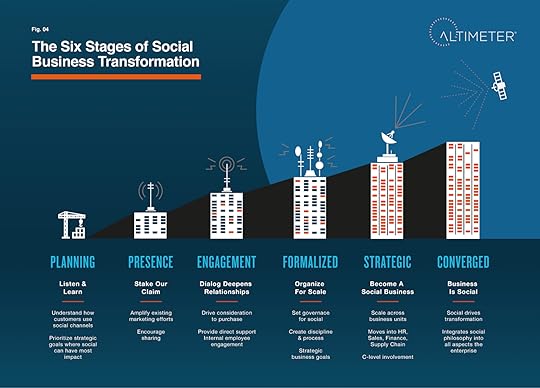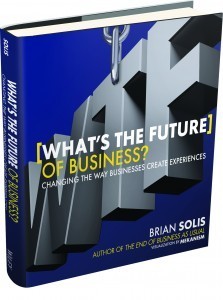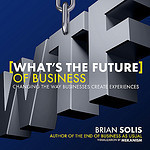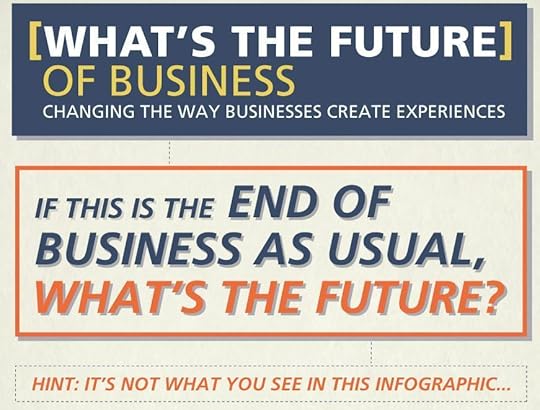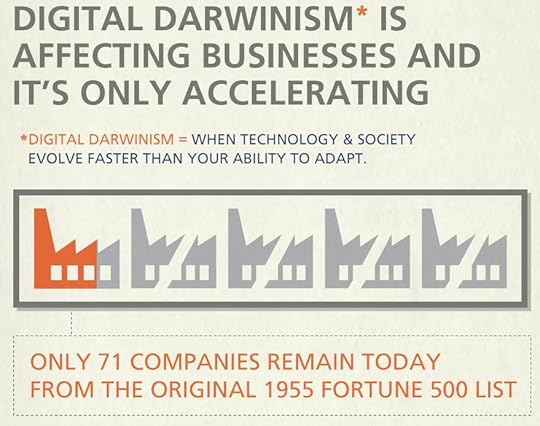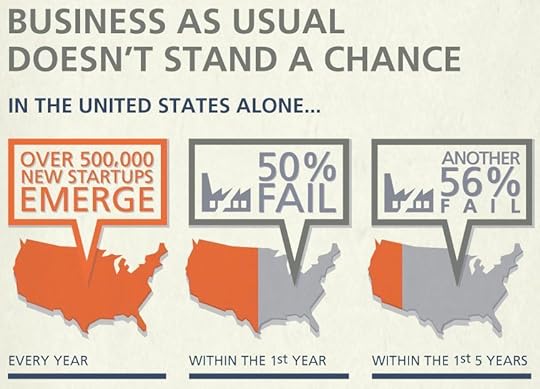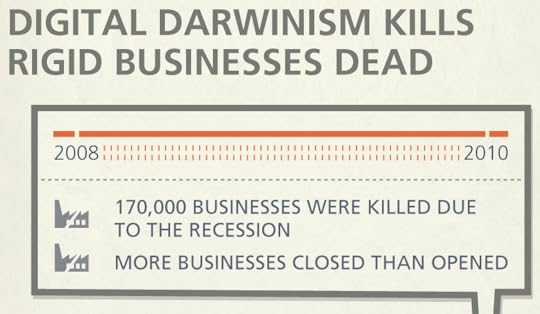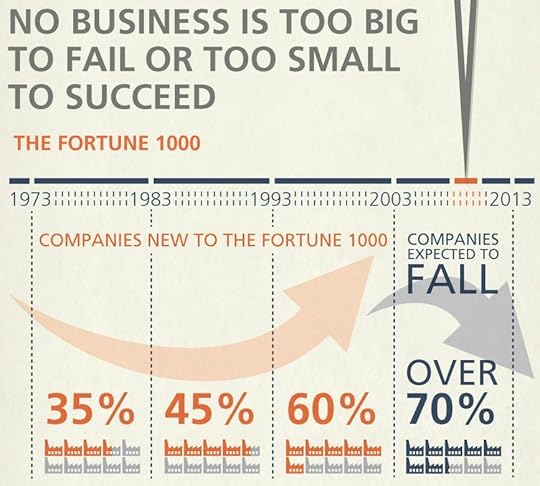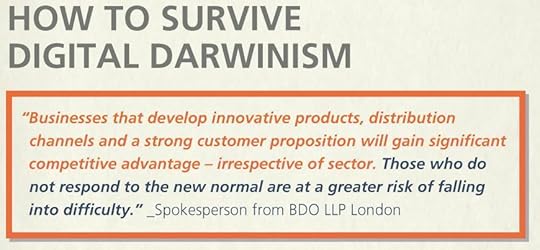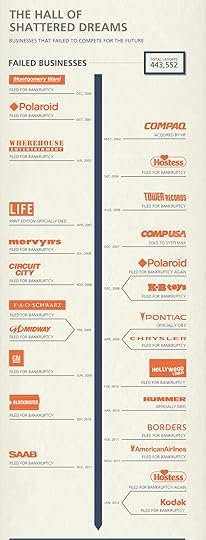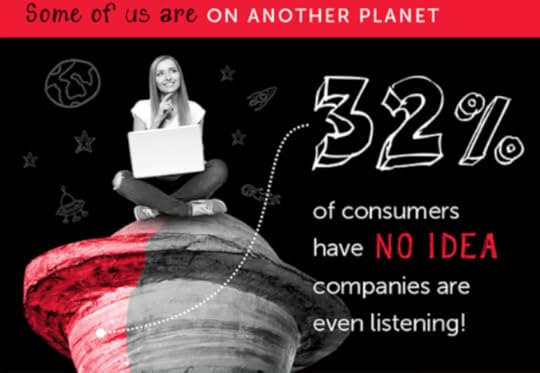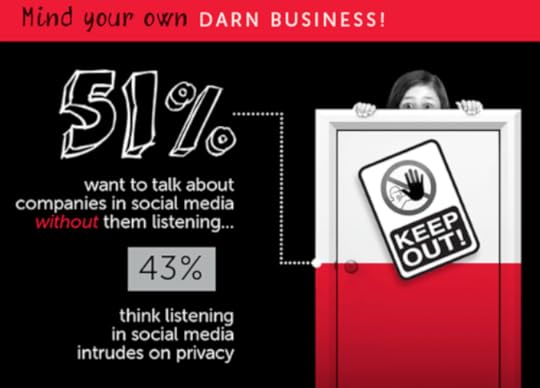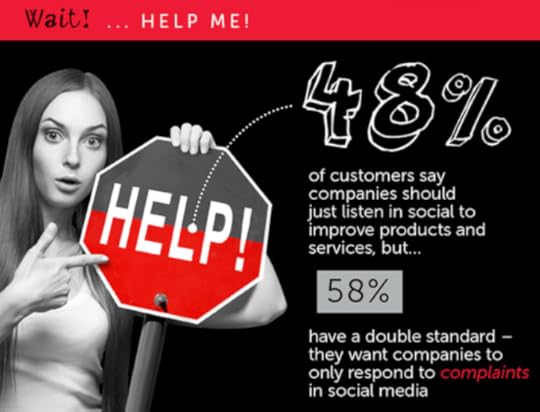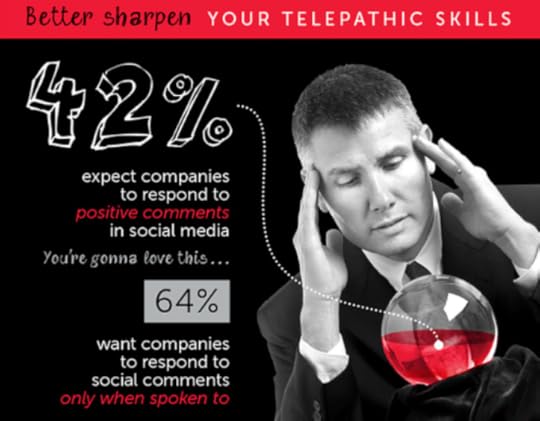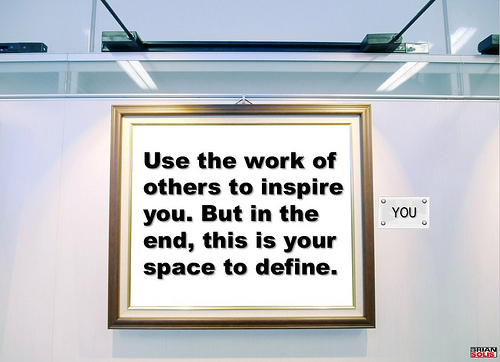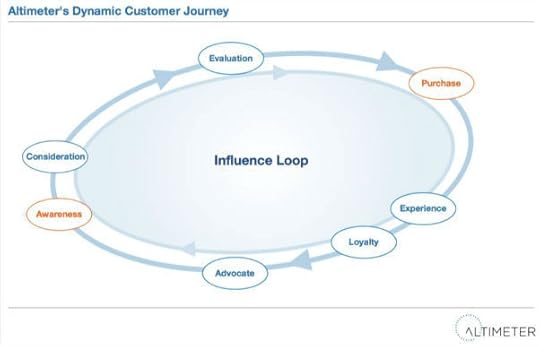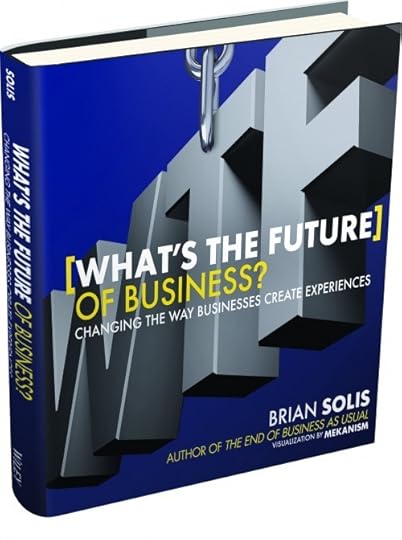Brian Solis's Blog, page 121
March 12, 2013
The Gap Between Social Media and Business Impact: 6 stages of social business transformation
In business, social media is becoming a lot like email. Every company has it. In an Altimeter Group survey of 700 executives and social strategists fielded in late 2012, we found that 100 percent of participating enterprise organizations run to varying extents an active social media strategy. But unlike email, organizations haven’t mastered how to effectively communicate through the likes of Facebook or the tweets of Twitter.
Over the last several years, businesses have increased the pace of adopting social media strategies for use in marketing, service and other related capacities. What’s becoming very clear however is that adopting social media and understanding its impact on customer and employee relationships and also the bottom line are not always linked. This disconnect between social media strategies and business value is forcing many executives to rethink their overall approach and the infrastructure they built to support it. The result of this reflective process is motivating organizations to transform everyday social media initiatives into deeper social business strategies.
Charlene Li and I spent the better of the last year studying how organizations approach social media and how planning, processes, and outcomes mature over time. Our findings are significant and are included in our newly released report, “The Evolution of Social Business Six Stages of Social Media Transformation.”
The results of our work were surprising to say the least. We uncovered a notable gap between organizations that executive social media programs and campaigns and those that specifically invest in social business strategies. Altimeter defines the evolution to a Social Business as the deep integration of social media and social methodologies into the organization to drive business impact.
On one side the chasm, there are businesses (or departments) that are actively investing in social media without intentions or outcomes being tied to business goals. On the other side are organizations that are deeply integrating social media and social methodologies throughout the company to drive tangible business impact.
In fact, we found that only 34% of businesses felt that their social strategy was connected to business outcomes and just 28% felt that they had a holistic approach to social media, where lines of business and business functions work together under a common vision. A mere 12% were confident they had a plan that looked beyond the next year. And, perhaps most astonishing was that only one half of companies surveyed said that top executives were “informed, engaged and aligned with their companies’ social strategy.”
But there’s hope. Charlene and I learned that the two most important criteria for a successful social business strategy are that it is 1) clearly aligned with strategic business goals of an organization, and 2) has organizational alignment and support that enables execution of that strategy. What separates them are six distinct stages that we believe most organizations have or will traverse as they mature.

The six stages are as follows:
Stage 1: Planning – “Listen to Learn”
The goal of this first stage is to ensure that there is a strong foundation for strategy development, organizational alignment, resource development, and execution. Key tenets of this stage include listening to customers to learn about their social behavior; using pilot projects to prioritize social efforts; and using audits to assess internal readiness.
Stage 2: Presence – “Stake Our Claim”
Staking a claim represents a natural evolution from planning to action. As you move along the journey, your experience establishes a formal and informed presence in social media. Key tenets of this stage include leveraging social content to amplify existing marketing efforts, providing information to support post-transaction issues; and aligning metrics with departmental or functional business objectives.
Stage 3: Engagement – “Dialog Deepens Relationships”
When organizations move into this stage, they make a commitment where social media is no longer a “nice to “have” but instead, is seen as a critical element in relationship building. Key tenets of this stage include participating in conversations to build communities; using engagement and influence to speed path to purchase efficiently; providing support through direct engagement, as well as between people; establishing a risk management and training discipline to shift mindsets; and fostering employee engagement through enterprise social networks.
Stage 4: Formalized – “Organize for Scale”
The risk of uncoordinated social initiatives is the main driver moving organizations into Stage 4, where a formalized approach focuses on three key activities: establishing an executive sponsor; creating a hub, a.k.a. a Center of Excellence (CoE); and establishing organization-wide governance. Organizations should plan for a potential CoE pitfall, however, as creating one may lead to scaling problems in the long-term.
Stage 5: Strategic – “Becoming a Social Business”
As organizations migrate along the maturity model, the social media initiatives gain greater visibility as they begin to have real business impact. This captures the attention of C-level executives and department heads who see the potential of social. Key tenets of this stage include integrating social into all areas of the business; garnering executive engagement; forming a steering committee; and pushing social operations out to business units.
Stage 6: Converged – “Business is Social”
As a result of the cross-functional and executive support, social business strategies start to weave into the fabric of an evolving organization. To move into this stage, organizations need to make a commitment to a single business strategy process; merging social with digital; creating holistic customer experiences with converged media; and developing a holistic social culture.
The Evolution of Social Business: Six Stages of Social Media Transformation from Altimeter Group Network on SlideShare

March 7, 2013
Can you answer the question everyone is asking? WTF – What is the future of business?
Today’s leading companies are already becoming obsolete. Fortunately or unfortunately, they won’t know until it’s too late. In 10 years, 40% of the Fortune 500 was replaced. Irrelevance is only accelerating. It’s Digital Darwinism out here. #AdaptorDie!
Ignorance is bliss, until it’s not.
Technology…social, mobile, real-time, it’s changing the world. Customers are evolving into something new. They’re more connected, empowered, and demanding.
Can you answer the question everyone is asking?
WTF!?
What’s the future of business is not a question as much as it is the answer. And, it all comes down to you.
WTF explores in a fun, visual and insightful way, how connected consumerism breaks down into Four Moments of Truth, the role of technology in decision-making, and how businesses need to create experiences that mean something in each stage and also spark engagement between consumers based on those experiences. It’s also an experience in of itself. It’s a visually rich, square-shaped (coffee table style) four-color journey…think digital app but in an analog format.
Trailer Credit: Simplifilm
Music Credit: Tim Holt
Thanks guys!

March 4, 2013
Will you fall or thrive in this consumer revolution? Believe it or not, you decide

In a post Occupy world, organizations everywhere should contemplate the themes that flooded the undercurrent of one of the greatest consumer uprisings in recent history. Even though some minimize the rise of Occupy as a rebellion without a cause, I believe there’s much to learn from these events to prevent them from happening again…or at least to you.
What’s the Future of Business? WTF
While the inspiration for the insurrection is diverse and personal, one thing is clear, everyday people have had enough. Collectively, the frustration and discontentment with the state of the economy, socioeconomic equality, and overall consumer disregard by business and government boiled over into a worldwide statement that screamed for action and transformation. We were witness to what could be construed as end of business as usual to say the least. What started in Wall Street to protest high unemployment and corporate greed quickly spread to 2,773 Occupy communities in over 82 countries.
What we can learn from Occupy is that it’s just a matter of time until, in its own way; the driving principles of Occupy take aim at your business or industry. Whether we realize it or not, the sentiment that contributes to disgruntlement is not new. Signs have been posted everywhere and technology and social media is only making it easier to organize and rise up.
If you think about your front line of defense as it exists today, the feelings that lead to malaise, such as negative experiences, engagement, or support, are met through marketing or customer service models that for all intents and purposes are outdated. And some quite honestly, evoke thoughts of medieval torture chambers considering how painful it is to endure “service.” There’s a reason people revolt. While experts continually pour over the role of social networks in citizen and consumer revolutions alike, the one thing they share isn’t just technology, it’s a state of mass discontent that leaned on technology to bring about change.
That’s the point. Change or (r)evolution isn’t because of social media, it’s changing because expectations and tolerance continue to evolve. The difference is that nowadays, people can mobilize much faster and to greater extent. Yes, everyday people are now more powerful than ever before. And it is people that play a part in heralding what I refer to as Digital Darwinism, an emerging phenomenon when technology and society evolve faster than the ability to adapt. On the other side of the coin, organizations too, miss their contribution to Digital Darwinism by failing to recognize new opportunities to learn, engage, or adapt.
#AdaptorDie
Today, no company is too big to fail nor too small to succeed. The outcome is driven by an organization’s ability to adapt to market conditions and customer expectations. It’s not a new concept. But what is new is the tremendous journey that organizations must embark upon to get there.
Many business models are rigid, focused on the management of operations, efficiencies, growth opportunities and P&L. This view has worked well for decades. However, now in a new era of digital influence, connected customers, and customers in general, are clamoring to be heard and to become part of the business ecosystem. As a result, leaders must embrace new methodologies, technologies, and systems to engage stakeholders and work together to build a new framework that upgrades the dynamic for stakeholder engagement and collaboration and the resulting experience now and how it’s reinforced over time.
This requires nothing less than the establishment of a dedicated taskforce with an exact mission of transformation. The primary charter is to establish a course for evolution by aligning stakeholders and decision makers around collaboration and decision-making initiatives. It’s not an overnight process. What we are talking about is retrofitting or in some cases re-architecting the foundation to compete in the years to come.
This is done through a four-step rigor that begins internally to have an impact inside and outside the organization. And, as a champion for new possibilities, everything begins with you.
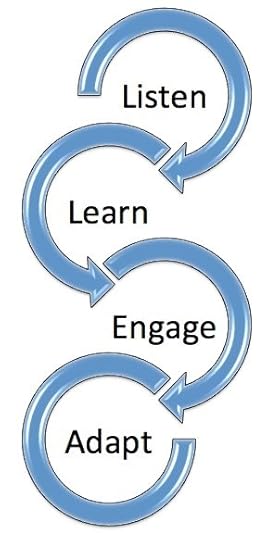
1. Listen – Use new media tools to listen (not in an intrusive way) beyond keywords and sentiment. Observe trends, insights, and opportunities to improve experiences.
2. Learn – Build a procedure, with roles and responsibilities, and a path around discovery and innovation. Translate activity into actionable insights and ensure that a two-way path connects business lines and functions back to the market through direct engagement or the improvement of products and services.
3. Engage – The state of businesses are no longer created, they’re co-created through shared experiences. Stakeholders, including customers and employees, must realize that you’re listening and learning. Engagement is the key to steering and shaping experiences through collaboration. Doing so invests the cultivation of a meaningful community and ultimately loyalty.
4. Adapt – Customers don’t always know what they want. But, they do know what they don’t want. Everything gleaned from steps one through three reveal everything about how an organization can adapt to earn relevance as part of its everyday business practice. Processes, systems, technology, it’s all rooted in the ability to not just move and react to customer revolutions, but eventually lead them.
This is an opportunity to re-examine relationships with customers and employees to not only avert potential crises, but steer more positive engagement and experiences as part of standard business practices – an answer to what’s the future of business if you will. It starts with listening and learning and culminates with engagement and adaptation.
This is why your role is more important then ever before. Everything you know and everything you’re learning will help your business or organization mature, increase in relevance, and deliver more significant experiences. The end results are preference, increased loyalty and advocacy, and ultimately connectedness. It’s how you demonstrate the opportunity and the path forward that count for everything. This is your time…
Please consider pre-ordering my next book, What’s the Future of Business?

March 2, 2013
Pre-order What’s the Future of Business and get the all new Conversation Prism for free
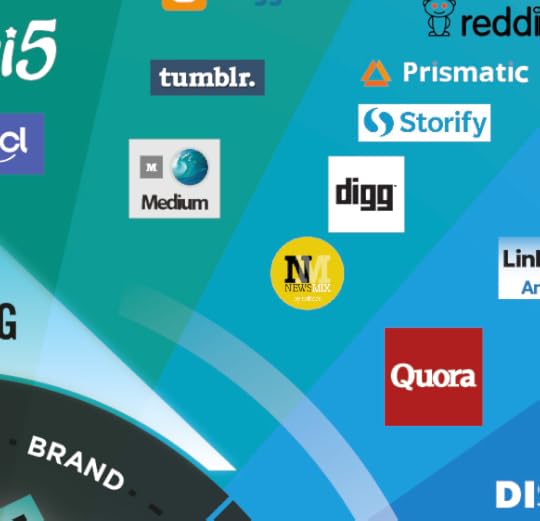
Good news! What’s the Future of Business is on its way to all the distribution warehouses. This means that your new book will ship this week or next.
I’d like to ask you for your help. For authors, pre-orders are important. I recently shared an offer to receive an engraved silver End of Business as Usual bookmark for all new pre-orders. For all orders placed today and up through shipping, I’d like to offer another option.
If you’ve followed my work over the years, you’re most likely familiar with The Conversation Prism. The team at JESS3 and I excited to share that version 4.0 is on the horizon (stay tuned for news about availability). For those who pre-order WTF as of today 3/2/13, you can choose either the bookmark or a 22 x 28 poster of all new Conversation Prism 4.0! Hint: the image you see above is a preview of what’s to come…
Please pre-order at your favorite bookstore:
Then send an email to Sarah Buhr with your proof of purchase (anything really, as long as it doesn’t reveal personal info) along with your address and we’ll send either the bookmark or the poster (when available) out to you! Posters are available for shipment in the U.S. only for now…if you live outside the U.S. and are willing to pay for shipping in advance, we will ship it to you.
Note: Kindle and Nook will go live on the same day the book becomes officially available. Sorry retailers aren’t making ebooks available for pre-sale.

February 28, 2013
No Business is Too Big to Fail or Too Small to Succeed – Sobering stats on business failures
We live in an era of what I refer to as Digital Darwinism, a time when technology and society are evolving faster than the ability of many organizations to adapt.
Over the years, I’ve studied how disruptive technology affects consumer behavior and decision-making. I’ve also researched how businesses react (or don’t) to these changes. What I’ve learned is that barring a few exceptional instances of complete ignorance, organizations are open to adaptation if there’s indeed a case made for it and a path outlined to safely and cost-effectively navigate change.
Part of the problem is that decision makers and stakeholders react to shareholders and not necessarily customers or markets. When they are ready to react, it’s typically a technology-first rather than a people-first initiative. Without understanding behavior, expectations, patterns, and new touch points, technology is often the right answer at the wrong time. It’s not unlike the famous saying about missed targets when they follow a “ready, fire, aim” command.
To mark the occasion of my upcoming book, What’s the Future of Business: Changing the way businesses create experiences, I worked with the team at Barnickel Design in New York to create an infographic that tells the chilling story of the effects of Digital Darwinism and a changing consumer landscape. To tell the story, I dissected the infographic into chapters.
Please read on to learn about how crazy things are getting and what you can do about it…(full infographic at the end)
Digital Darwinism is Accelerating
Digital Darwinism is affecting businesses and it’s only accelerating.
Only 71 companies remain today from the original 1955 Fortune 500 list.
Source: Jim Collins, author of Built to Last
Business as Usual Doesn’t Stand a Chance
In the United States alone, over 500,000 new startups emerge every year. Of that, 50% are likely fail within the first year. And, within the first five years, another 56% are expected to fail.
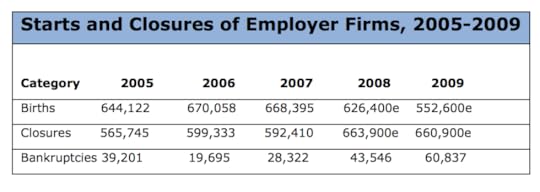
Digital Darwinism Kills Rigid Businesses Dead
The most recent recession in the U.S. had a crushing effect on businesses. Within a two year period between 2008 and 2010, 170,000 businesses are estimated to have closed. And, more businesses closed than opened in that timeframe.
No Business is Too Big to Fail or Too Small to Succeed
Between 1973 and 1983, 35% of companies in the Fortune 1000 were new to the list.
From 1983 TO 1993, 45%.
From 1993 TO 2003, 60%.
Over 70% of Fortune 1000 companies were expected to fall between 2003 and 2013
Source: Forbes
How to Survive Digital Darwinism
In 2012, BDO, LLC, a international services firm providing assurance, tax, financial advisory and consulting services to a wide range of publicly traded and privately held companies, published its Industry Watch Report. The findings presented a clear division between UK businesses that were able to take advantage of emergent growth opportunities and those who likely to wrestle with Digital Darwinism in difficult markets. As the report found, the “gap between business winners and losers widens.”
Shay Bannon, Business Restructuring Partner, BDO LLP, commented in the report, “Businesses that develop innovative products, distribution channels and a strong customer proposition will gain significant competitive advantage – irrespective of sector. Those who do not respond to the new normal are at a greater risk of falling into difficulty.”
The Hall of Shattered Dreams
When I think back to brands I grew up with and where they are today, it’s saddening to see that many of them are gone or dying. Which brands do you remember and of those, which have vanished? Leaders recognize the precious relationship a brand can have with customers. At the same time, there’s a sense of fragility, relevance and determination that must inspire leadership. As Intel’s Andy Grove often said, “Only the paranoid survive.”
While this is not the most cheerful story ever told, the silver lining is that right here, right now, management cultures must evolve into leadership cultures. And leaders must rise from somewhere and when they do, they need help…fast. You are either that leader or someone that will help leaders bring about meaningful transformation.
Competing for relevance is now a mission of every business and as such, it should be relentlessly pursued. The future of business is not about technology, greed, or short-term deals. It’s about people, purpose, and experiences.
It takes vision
It takes empathy
It takes courage.
The future of business lies in the shift from a culture of management to that of leadership and…
it begins with you.

February 27, 2013
Pre-order WTF and get a silver #EndofBusiness bookmark
I just learned that What’s the Future of Business is just about to start shipping!
I’m so excited to share my new book with you. I put a lot of time and passion into writing what I hope is nothing less than an easy-to-ready„ convincing but also helpful book.
I’ve also invested a significant amount of effort into the creativity and design behind what a book could be…in this case a proof point for demonstrating the importance and power of experiences. The tagline is after all, “changing the way businesses create experiences.”
First, the book is square in shape, kind of like a coffee table book. It was designed in partnership with my friends at Mekanism (they created the Pepsi/Beyonce ad during Super Bowl, and every chapter features original artworks based on key themes within each by my dear friend Hugh MacLeod (@gapingvoid). It’s also designed to be immersive…think of it like a mobile, analog app. How I convinced Wiley to let go of the design process is beyond me, but I’m more than thankful. This thing is beautiful.
For authors, pre-orders are very very important and this is crunch time. I’d like to ask you for your help. In exchange for pre-ordering WTF, I’d like to thank you by sending a silver bookmark that features an engraved cover of The End of Business as Usual. They make the perfect pair!
Please pre-order here:
Then send an email to Sarah Buhr with your proof of purchase (anything really, as long as it doesn’t reveal personal info) along with your address and we’ll send the bookmark out to you!
Note: e-books will go live on the same day the book becomes officially available. Sorry retailers aren’t making ebooks available for pre-sale.

February 25, 2013
Are Businesses Invading Consumer Privacy By Listening to Social Media Conversations?
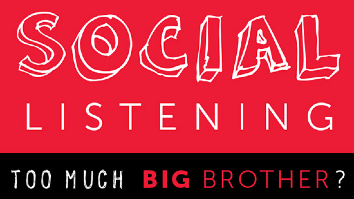
Social media represents a new frontier in customer engagement. Not only can companies participate in conversations, a dizzying array of tools now help them listen to conversations as well. This isn’t news though. Everyone understands the importance of social media in business right? We all know that customers are demanding that businesses use social media to listen to ideas, engage them in conversations, and also solve their problems when in need. As I’ve often said, the best listeners often make the most engaging conversationalists.
Not so fast.
Perhaps what we think we know and what customers may actually want in social media represent an unforeseen gap that requires further consideration. According to a joint study published today by NetBase and J.D. Power and Associates, a double standard may exist in social media customer service where consumers say that listening is intrusive except when it’s not.
Cue the screeching brakes…
WTF!?
Social media listening is largely recognized as the new standard in community management. Listening after all is how companies can learn how to better serve and engage customers. And, doing so can improve sentiment and also foster stronger relationships, build communities, and encourage loyalty and advocacy.
Yet, your customers may not welcome your good intentions.
This creates an interesting dilemma as improving listening is a top goal for businesses this year. My colleagues at Altimeter Group found as part of its upcoming Social Business Strategies Survey that 42% of companies indicated that “listening/learning from customers” is a top three priority for 2013.
But, if consumers don’t want companies to listen to them, what are they to do?
Let’s take a look at the interesting story that NetBase and J.D. Power and Associates visualized in this compelling infographic, “Is Social Listening Too Much Big Brother?”
A catch-22 may greet many businesses in social media as consumers believe that listening can be intrusive except when they need something. But how are companies supposed to help customers if they’re not supposed to listen?
Did you know that 32% of consumers using social media have no idea that brands are listening? I find this fascinating as social media, is well, social. We live in public and for consumers to be unaware of listening makes me wonder if it’s us or them who are living on another planet.
This is where things get very interesting. Over half of consumers (51%) want to be able to talk about companies without them listening. Perhaps more alarming however is that 43% of consumers actually think listening to conversations intrudes on privacy.
Businesses appear to be caught in a web of “damned if they do and damned if they don’t.” At first blush, a double standard comes alive with 48% allowing companies to listen if the goal is to improve products and services. And 58% believe that businesses should only respond to complaints in social media.
As the infographic suggests, it may be time to sharpen your telepathy skills. Essentially businesses need to become mind readers because 42% of consumers also expect companies to respond to positive comments. And you’re going to love this, 64% of consumers want companies to only speak to them when spoken to. Huh?
Considering that 58% want you to engage in times of need, 42% wish to hear from you in good times, 64% only want you listening to be at their beck and call, and half of all consumers don’t want you listening at all, what’s a business to do?
Obviously social media, and specifically social listening, isn’t going away. But it does take tactfulness, genuine intentions and diplomacy to listen, learn, and engage (directly or indirectly) in ways that consumers feel recognized and important. It’s hard to imagine that anyone who says something negative or positive only to have it appreciated and considered by an organization will feel anything other than thankful.
To help CMOs and social strategists tread carefully while improving products, services and relationships, NetBase and J.D. Power and Associates offer the following four steps to follow:
1. Don’t just listen…understand. There’s a difference between listening and hearing.
2. Context is king here. Consider the context of each post before your respond, react, or assign engagement. This is where listening converts into intelligence.
3. Engage with good intentions. In social media, the end game is reciprocity.
4. Actions speak louder than words. Demonstrate how your participation in social media is dedicated to helping and building relationships. Do so relentlessly.
For additional insights into consumer impressions on social media and how it breaks down by demographics, take a look at the SlideShare below and also take a look at the free ebook.
Social Listening vs. Digital Privacy, a Study by NetBase & JD Power from mosofsky
Here’s the complete infographic for your review…
Please consider pre-ordering my next book, What’s the Future of Business?
PClick #WTF today…



 Originally published as part of the LinkedIn Influencer program
Originally published as part of the LinkedIn Influencer program

February 21, 2013
A Visual History of Book Trailers by Brian Solis
If you follow my work, you’ve probably learned that I’m becoming increasingly fond of web video. As an author, I am fascinated by the different channels and new media opportunities that have been thrust upon the world of book marketing. Over the years, I often considered how to create book-related videos that provided viewers with something beyond a traditional promo or standard author introduction. While important, they weren’t necessarily conducive for social sharing.
A few years ago, I was introduced to a spectacular trailer for a then unheard of book, Abraham Lincoln: Vampire Hunter. My mind was blown. “A trailer for book!?,” I wondered aloud. Not only did I watch it, I shared and re-shared it and also ordered the book. It was just so far out there that I wanted to find a way to bring this level of creativity and production value to the oft routine realm of business book publicity.
In the same year, I believe it was early 2010, my long-time producer Andrew Landini and I had an idea to create a book trailer for Engage, which was set to release at SXSW that year. Three books later, the tradition of book trailers not only continues, it’s become standard practice as part of the book marketing checklist.
As a tribute to book trailers everywhere and to celebrate the upcoming release of my new book, What’s the Future of Business: Changing the way businesses create experiences, I pulled past trailers for your review here. Though you’ll see a trailer for my next book here, I’m also working on a series of additional trailers that each tell a different story to the different audiences that can benefit from the variety of included experiences.
Without further ado, here’s a chronicle of my trailers to date…
Engage!
The End of Business as Usual Part 1
The End of Business as Usual Part 2
What’s the Future of Business Part 1
Please consider pre-ordering #WTF today…

February 19, 2013
The 5 Pillars of New Media Strategy: There is no box!
I often share my thoughts to help global brands and enterprise organizations. But with this article, I would like to talk to the broader group of business professionals without reference to the size and shape of your company. Here and in many other media outlets, networks, and blogs around the web, social media is one of the most prevalent subjects in business today. While advice is everywhere, advice is becoming a commodity. Insight however, is precious.
Let’s take this time together to share with you my thoughts on some of the most often asked questions and how your role in finding the right answers and putting them into action is more important than you may think.
While you may read success story after success story, we cannot make any great assumptions in how they’ll impact your work.
There is a great myth that a winning formula exists for success in social media; that if you deconstruct the most popular case studies, you’ll find a winning recipe for your social media strategy.
It’s easy to get caught up in the creative examples we read about. Many times however, they feed the very impressions that can work against you.
- If we can introduce the right viral content we can get more views or friends.
- If we can maintain a rhythmic editorial calendar we can spark conversations that create a social effect.
- If we can develop the most amazing app, we can rise to the top of our customer’s attention span!
- And, my personal favorite, if we get our company in social networks, we can build better relationships with our customers.
Rather than seeking shortcuts, we should see these examples as inspiration. In the end however, we each have our own question we need to answer…what do successful relationships and experiences look like in social media for our customers?
The formula for success in social media begins with first defining what success is and how it will be measured. This is one of the most important steps in any social media strategy, yet it is the first step that many businesses miss. The truth is that there is no formula for success. It requires something special for each strategy and it’s dependent on the people you’re trying to reach, their expectations, your business objectives and how this engagement ties specifically to your organization (sales, marketing, service, products, etc.)
To help, let’s put social media strategy into an approachable framework. Begin by organizing the most important themes to form what I refer to as The 5 Pillars of Social Media Strategy. This will contribute to a meaningful social media presence as long as you revisit this approach through every step of the strategy process.
1. Listen, Search, Walk a “Daily in the Life” of your customers.
Research is critical in understanding how your connected consumer makes decisions, how they’re influenced and where they engage and learn. This is the dynamic customer journey. Here, you’ll learn that your social customers are not at all like the traditional customers you know. Please note that they’re still important, but a new approach is required to expand your reach. Essentially here you discover new touch points and decision-making cycles. You’ll learn that this isn’t just about social media at all. In fact you’ll see how social, mobile, digital and other traditional channels need to work together to guide a complementary, integrated and converged journey. Think of it as customer journey optimization (CJO) or customer journey management (CJM).
2: Rethink your Vision, Mission, and Purpose.
When’s the last time you read your company’s vision or mission statements? Did it or does it speak to you? Would you Tweet it? Take this time to redesign customer experiences and articulate your vision for how you will use social media to improve customer experiences now and over time.
3. Define Your Brand Persona
Take some time to answer the following questions…What do you want people to see and appreciate? What do you want customers to hear, see, think and feel? Who are they engaging with? What do you stand for? Defining your brand persona will humanize engagement and make takeaway impressions and value consistent across every network and in every scenario.
4. Develop a Social Business Strategy.
Make your presence matter. This isn’t just about concepting the next Facebook Like or Twitter Retweet campaign. Based on the first 3 steps, develop a business-level strategy that meets the needs and expectations of your connected customers. As you’ll learn in step 1, new touch points emerge. If you are not part of the awareness stage of the decision making cycle, you will not benefit from consideration nor a decision in your favor. They key is to also tie social media back to key business objectives while investing in the necessary roles to engage customers at the functional level (service/support, sales, marketing, collaboration/innovation, etc.)
5. Build and Invest in Your Community.
Don’t just think about social media as an editorial or marketing program. That’s just table stakes. In fact, don’t just limit this to social media at all. This is a chance to rethink the entire engagement strategy and the customer journey. Ultimately, you’re setting the stage for something more meaningful and substantive…the experience. Community isn’t defined by Likes or followers. Those are essentially “in the moment” actions. We’re talking about human beings. Community is much more than belonging to something; it’s about doing something together that makes belonging matter. Participate in the communities that you host and also the communities that host the conversations that are important to your business. That’s the secret to earning a lasting affinity the contributes to you becoming a trusted resource.
By repeating steps one through five over time will help you achieve empathy, which will inspire meaningful strategies to earn relevance. I often think of my good friend Chris Heuer’s words, “There is no box!” In the face of something, something that moves and adapts so quickly, we can only be students to learn and figure out what others take for granted. It’s important to remember is that in social media, mobile, and in the face of innovation, there is no box to think outside of. In fact, there is no box. There is only a blank slate and a series of unanswered questions that separate you from your connected customers. Seek inspiration from the examples of others, but use The 5 Pillars of Social Media Strategy to learn how to reach, engage, and enchant your connected customers now and in the future.
Originally published in AT&T’s Networking Exchange
Please consider pre-ordering my next book, What’s the Future of Business?

February 14, 2013
Save 50% when you pre-order What’s the Future of Business in the next 24 hours
What’s the Future of Business: Changing the Way Businesses Create Experiences
I recently announced the title of my next book and also that it was already at the printer with delivery just around the corner. As an author, you put a lot of work, time, research, and passion into something and you only hope that when it finally comes out that others will share in the experience. This is that time.
My humble request and the special offer are intertwined…
Back in October, I partnered with Barnes and Noble to offer you a special 24-hour flash sale. Well, I’m proud to announce that B&N is bringing the promotion back to life for 48-hours only. In celebration of the release, which is just a few weeks away, you can now save 50% when you pre-order today and tomorrow (2/14 & 2/15).
How can you talk about the importance of experiences if the book isn’t “an” experience? This is a special book…at least I set out to do something special with it. The shape is square in shape and in full color throughout. An original book template was designed by my friends at Mekanism. @Gapingvoid contributes original art in every chapter. The flow is more like an analog version of a digital app. It’s immersive. It’s experiential.
I hope you love it.
Thank you for your support now and over the years.


